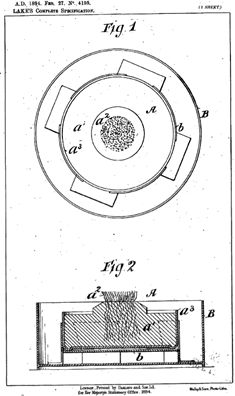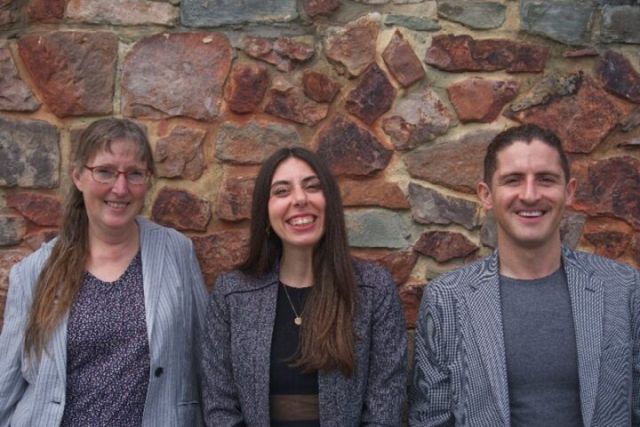To mark our 175th anniversary, James Bowen, a trainee patent attorney in our Chemistry & Life Sciences team, discusses the issue of food insecurity, advancements in agritech, and HLK's history of protecting inventions relating to pest control.
Food insecurity
The 2025 Global Outlook by the UN's World Food Programme (WFP) highlights a dire reality: food shortages around the world are escalating and action is urgently required to prevent a further surge in the number of people facing catastrophic hunger.1,2 At present, an estimated 343 million people across 74 countries face acute hunger – an alarming increase of around 200 million since 2020. The UN's Food and Agriculture Organization (FAO) also warn that by 2030, 582 million people could be chronically undernourished.3
A number of factors contribute to this worsening food insecurity, including conflict, economic turmoil, and extreme weather events such as floods and wildfires. With the world population growing and climate change fuelling natural disasters, it is more important than ever to maximise food supply to prevent further deterioration in global food insecurity.
Of particular importance are agricultural crop yields, since roughly 80% of food supply comes from plant products.4 Nevertheless, according to the FAO, around 40% of crops are lost to plant pests and disease every year, representing a large source of food which could assist with tackling supply shortages.4 A plant pest can be defined as any species, strain, or biotype of a pathogenic agent, animal or parasitic plant which causes harm to plants or plant products.5
Insects represent an important class of plant pest which cause significant loss of crop yields, through both feeding on the plant and by causing fungal, bacterial, and viral infections. Common insect pests include the green peach aphid (Myzus persicae), the common bollworm (Helicoverpa armigera), and the western flower thrip (Frankliniella occidentalis). Having recently battled with both aphids and thrips who had taken up residence on my houseplants, I now more than ever appreciate the consequences of letting pests take over.
Pest control
The use of chemical pest control is documented as early as 2500 B.C., where Ancient Sumerians used sulfur compounds to kill insects, and it is still used to this day to tackle mites and fungus in farms.6 Although HLK has not been around for 4,500 years, it has been involved in protecting inventions relating to pest control for much of its 175-year history. Way back in 1894, HLK (or Haseltine, Lake & Co., as our firm was known back then) assisted in the filing of a patent to a candle for burning sulfur. While sulfur's sustained use over thousands of years demonstrates its effectiveness as a pesticide, it does not come without drawbacks, such as its negative impact on beneficial insects, contribution to the formation of acid rain and gasses which are harmful to human health, and not least the smell – I definitely wouldn't want to light a sulfur candle in my flat...!

Front page of GB189404195, a patent to a candle for burning sulfur, filed in 1894 by Henry Harris Lake of Haseltine, Lake & Co.

Schematic diagrams of the sulfur burning candle in GB189404195.
Thankfully, there have been a number of developments in pest control over the last 175 years and HLK has been involved in obtaining patent protection for some of these inventions, including GB669823 (an improved rosin amine pest control composition), GB716643 (a method of producing the insecticide hydrogen phosphide), and GB1395129 (insecticidal phenols).
However, not all advancements have proved beneficial. The influential book "Silent Spring" by Rachel Carson documents the negative effects humans have on the natural world, in particular through the indiscriminate use of pesticides.11 A notorious example of this is the now banned dichloro-diphenyl-trichloroethane (DDT), a pesticide which, after widespread indiscriminate use, was found to persist in the environment, accumulate in the food chain, and harm both animal and human health. This is one of many instances where pesticide use has had ecological and environmental consequences.
Recent developments in pest control
The agricultural sector is therefore searching for new strategies to combat pests which do not have a detrimental impact on our planet. The use of RNA interference (RNAi) technology to control pests is one such promising approach.12 RNAi is a naturally occurring cellular defence system mediated by double-stranded RNA (dsRNA) which can be exploited to supress the expression of genes essential for an insect's growth or reproduction. As RNAi is sequence-specific, the delivery of RNA sequences tailored to a particular insect can selectively kill the pest in an agricultural setting without undesired adverse ecological effects. Nevertheless, the delivery of RNA is often thwarted by limited cellular uptake and chemical or enzymatic degradation of the nucleotide sequence. To fully exploit the capabilities of this emerging technology, further developments are required.
We have recently had the pleasure of working with CDotBio, a start-up in Bristol that is transforming agriculture with ground-breaking technology which they envisage will assist in replacing the use of traditional pesticides in crop farming. In relation to pest control, they have developed carbon nanodots which can enable RNA technology by offering both delivery and protective capabilities. It is hoped this technology will pave the way for replacing harmful and toxic pesticides with more sustainable, safer, and effective biopesticides. This may not only help enhance biodiversity and re-establish a healthy ecosystem, but also assist in tackling global food shortages by reducing the large swathes of lost crops caused by pests and disease.

CDotBio team, from left to right: Dr Fran Robson (CTO), Dr Veronica Greco (COO), and Dr Teo Garcia Millan (CEO).
Photograph courtesy of CDotBio.
Protection of intellectual property
With 175 years of experience as an intellectual property firm, HLK understands that the protection of inventions is often a fundamental step to ensure the application and success of a technology. For example, patents can be particularly important in assisting start-ups and SMEs to obtain investment to fund further technological advancements and to provide a valuable monopoly for inventions they worked so hard to develop. A patent also deters competitors whilst allowing a company to freely disseminate their work – this encourages collaboration between scientists and inspires further innovation. In the area of agritech where there is so much at stake, inspiring innovation and pushing technology forward are important pieces required to solve the puzzle of global food insecurity.
Footnotes
1. World Food Programme – 2025 Global Outlook
2. World Food Programme – Who we are
3. The State of Food and Agriculture 2024 | FAO
4. Plants, the 'core basis for life on Earth', under increasing threat, warns UN food agency | UN News
5. Definitions – UK Plant Health Information Portal
6. The History of Integrated Pest Management – Cornell University
7. GB189404195 – Improvements relating to the burning of sulphur for disinfecting purposes
8. GB669823 – Improvement in pest control composition
9. GB716643 – Process for the production of pest control agents
10. GB1395129 – Insecticidal phenols
11. Carson, Rachel, Silent Spring, 1962, Houghton Mifflin
12. RNA Interference (RNAi) – National Library of Medicine
13. CDotBio
The content of this article is intended to provide a general guide to the subject matter. Specialist advice should be sought about your specific circumstances.

